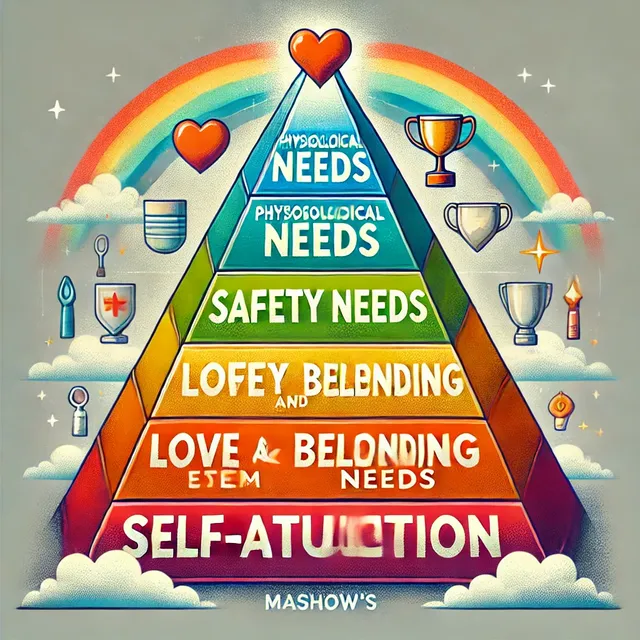Understanding Maslow's Pyramid: The Hierarchy of Human Needs

https://video.pictory.ai/1737412503820/20250120224826548Q6Lqjc96pCanpzb
Maslow's Pyramid, also known as Maslow’s Hierarchy of Needs, is a psychological framework developed by Abraham Maslow in 1943. It provides insight into human motivation, illustrating how people are driven by a progression of needs. Represented as a five-tiered pyramid, the hierarchy begins with the most basic needs at the bottom and ascends to more complex and abstract needs.
The Five Levels of Maslow’s Pyramid
1 Physiological Needs
At the base of the pyramid are the fundamental necessities for survival. These include:
- Food
- Water
- Shelter
- Sleep
- Breathing
These needs are essential for sustaining life. Without meeting these basic requirements, higher levels of the pyramid cannot be pursued.
2 Safety Needs
Once physiological needs are met, individuals seek security and stability. Safety needs encompass:
- Physical safety (protection from harm and danger)
- Financial stability (steady income and employment)
- Health and well-being
- Protection from environmental threats
These needs are crucial for creating a predictable and secure environment.
3 Love and Belonging
The third level focuses on interpersonal relationships and social connections, including:
- Friendships
- Family bonds
- Romantic relationships
- A sense of community and acceptance
Fulfilling these needs is vital for emotional well-being and prevents feelings of loneliness or isolation.
4 Esteem Needs
At this level, people strive for recognition and self-respect. Esteem needs are divided into two categories:
- Lower Esteem: Respect from others, such as recognition, status, and admiration.
- Higher Esteem: Self-respect, independence, and personal achievement.
Achieving esteem builds confidence and a sense of value in society.
5 Self-Actualization
At the top of the pyramid is self-actualization, the realization of one’s potential. This level focuses on:
- Personal growth
- Creativity
- Pursuing meaningful goals
- Self-fulfillment
Self-actualization is unique for every individual, as it aligns with personal aspirations and values.
Key Insights About Maslow’s Pyramid
- Progression and Regression: Individuals typically progress through the hierarchy as their needs are met, but life circumstances (e.g., loss of a job or illness) can cause regression to lower levels.
- Non-Linear Journey: While the model suggests a sequential progression, real-life needs may overlap or shift priorities depending on personal circumstances.
- Cultural Variations: The importance of each need can vary across cultures and societies.
Conclusion
Maslow’s Pyramid offers a compelling framework to understand human behavior and motivation. It reminds us that addressing basic needs is crucial before people can focus on more abstract goals and self-fulfillment. By recognizing where individuals or groups lie within this hierarchy, leaders, educators, and policymakers can better support human development and well-being.
Upvoted! Thank you for supporting witness @jswit.